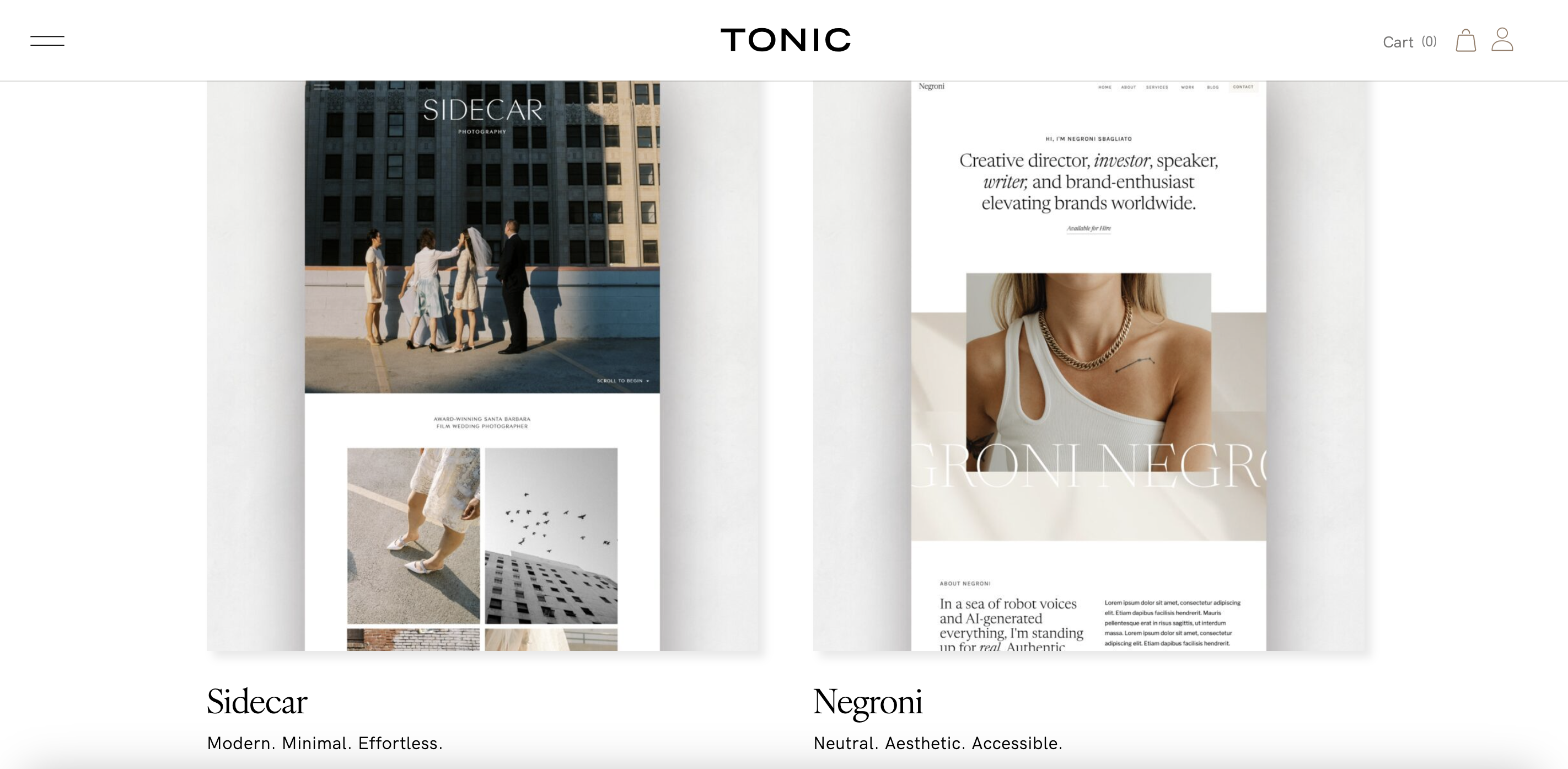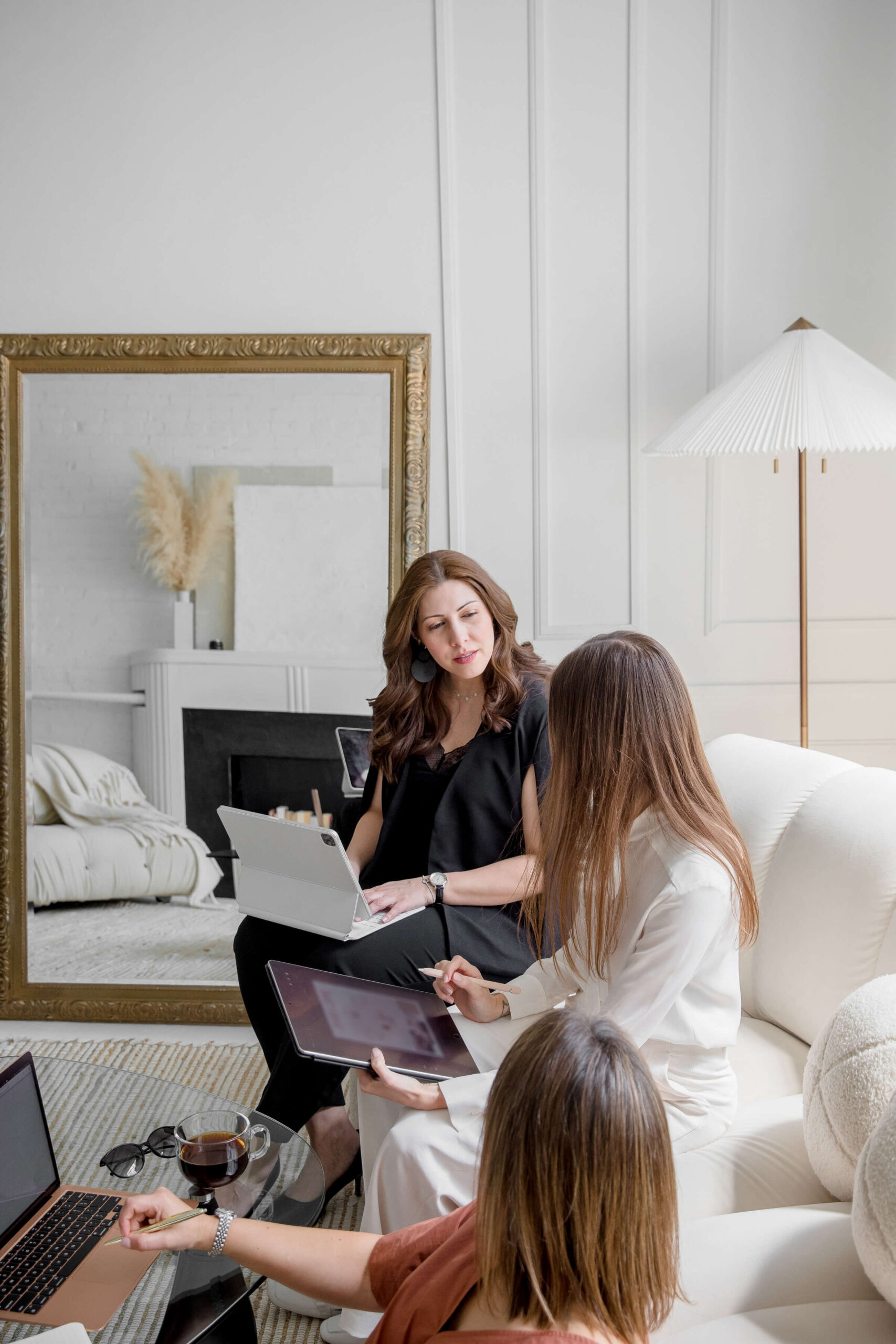Within every story, there’s another story to be discovered. In this post, I share the creative lessons learned from the book, Hamilton: The Revolution.
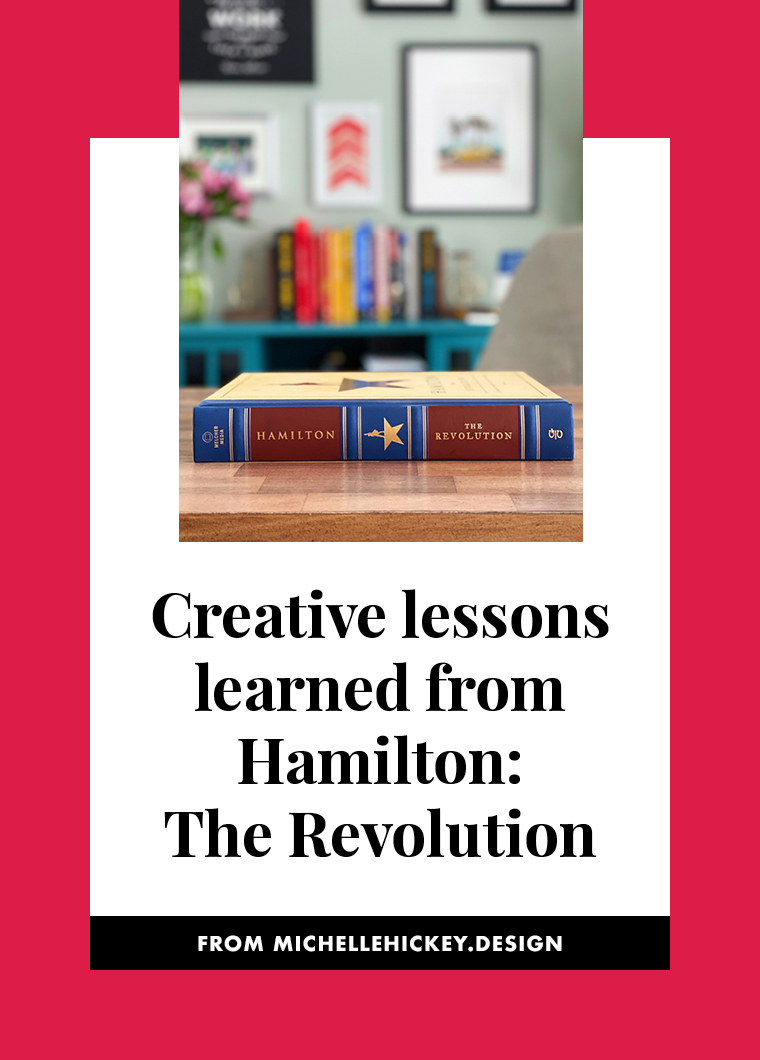
On March 12, 2020, I got an email from my library. Hamilton: The Revolution, written by Lin-Manuel Miranda and Jeremy McCarter, was available for pickup. I had been on a waiting list since September 2019. Days after I gleefully accepted the long-awaited hold from behind the library counter, my local branch temporarily closed its doors. Covid-19 lockdown weeks stretched into months and I found myself feeling increasingly grateful that I got to be quarantined with this special book.
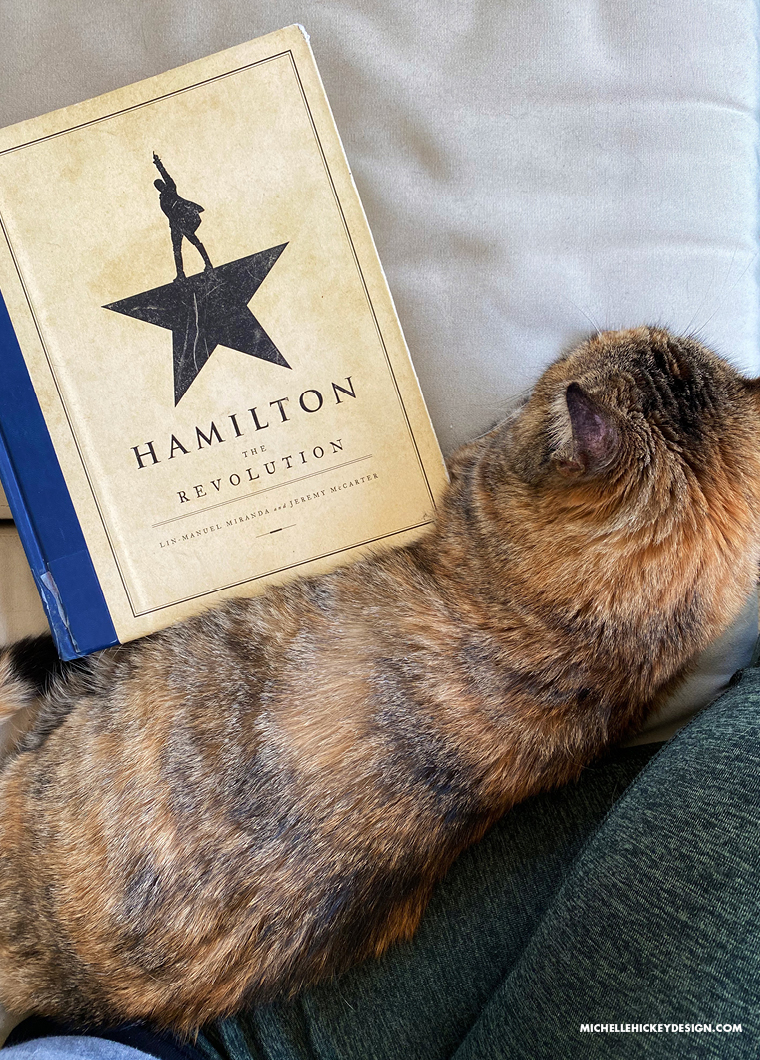
Not for display-only
I mistakenly assumed it was a coffee table book—the sort that you flip through but never actually read. It sports an unassuming cover, flanked with navy blue binding and a spine that resembles an Encyclopedia. Not something you’d be inclined to curl up beside, with a blanket and a cup of tea.
In actuality, Hamilton: The Revolution is more like one of those books that have a secret, hollowed-out center. Open it, and you will be surprised and delighted at its contents. The format cascades between two stories. The first is the one in which you are undoubtedly familiar— Hamilton, the musical. You can read the lyrics to every word from the show, which are printed next to, or laid on top of gorgeous shots from the production.

Give me all the details
Much like a literary version of VH1’s Pop up Video, there are footnotes on each of those pages, with anecdotes and tidbits about each song, from the show’s writer, Lin-Manuel Miranda. Those factoids left me wishing that more creators would be willing to share insights into the conception of their work. I’d be totally down to read an entire book of footnotes.
On page 143, there’s a note about a section from “Nonstop,” the number that closes out the first act. Lin explains that Hamilton steals the themes and melodies that have been associated with two of the main characters and twists them around his agenda as a way of making his argument heard. Not only is this a genius move, musically, (as we’re all familiar with those tunes at this point in the show), but it is a way for us to see that Hamilton is going to do whatever it takes to get what he wants.
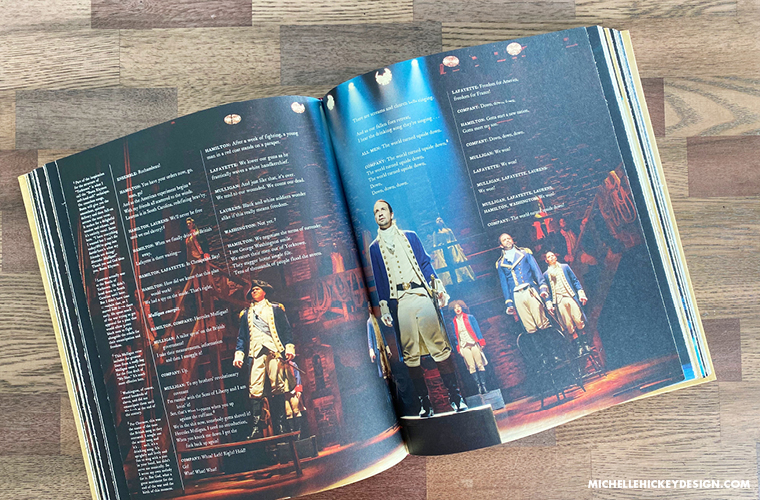
Rewind
It’s the kind of detail that wouldn’t likely register in your first viewing/listening, or maybe ever. I’ve seen the show twice live and have listened to the soundtrack countless times, and never made the connection. I should feel stupid, but it actually makes me happy. The best kind of creative work is so rich that we as consumers can’t possibly experience it at its fullest. It’s the reason that I so often watch tv episodes, movies, or listen to podcasts and songs multiple times. There is always more to discover.
A story within a story
The second tale that is woven between the “show” pages of the book, is the story of how Hamilton the musical came to be. Even if you have no interest in musicals or Alexander Hamilton, this section of the book is a wealth of knowledge for any creative who is in pursuit of a new project. Through smiles, giggles, and many photos taken of my favorite excerpts, I learned a great deal from Hamilton: The Revolution. Here are my favorite of those creative lessons.
Lesson 1 | Don’t be afraid to borrow ideas
There’s a fine line between stealing and adapting. But isn’t every piece of art is inspired by something? In this book you’ll see how Lin took ideas from a wide breadth of sources and remixed them into something new. It began with the musical itself, which is based on the biography of Alexander Hamilton, written by Ron Chernow.
Lin didn’t stop there. Music, lyrics, titles, thoughts, and actions were borrowed and spun from everyone ranging from Shakespeare, to Biggie Smalls, to the podcast My Brother, My Brother, and Me, to the actor Hugh Laurie, who gave Lin the idea for the title of King George’s big number, “You’ll Be Back” (you can find that fun footnote on page 57).
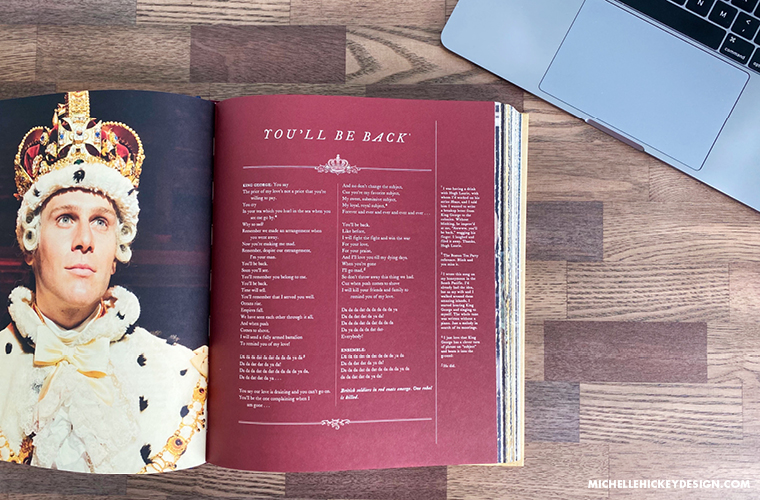
Lesson 2 | Work with the right people
This is a topic that Steve and I talk about frequently on A Podcast for Creatives. Through our discussions, we’ve found that the most successful creative collaborations are those in which the participants have enormous respect for one another. Somehow, all of the wonderfully creative people who played a part in Hamilton just happened to cross paths at the same time. Or perhaps it was Lin’s humble spirit that attracted them.
Unlike many creators who cling to their work, (guilty), Lin trusted his cast and production team to modify his vision, and shape it into a masterpiece. One of my favorite anecdotes, found on page 153, was in reference to the line “Uh…. France”, from the song “What’d I Miss?” The line was improvised by Daveed Diggs (who plays Thomas Jefferson) response to Madison’s rhetorical question, “Where have you been?” and Lin decided to keep it in the song. The line makes my husband and I laugh every time we hear it. After learning that backstory, it delights me even more.

Another story that has stuck with me, happened during previews for Hamilton, the musical. President Obama was coming to watch a performance— on a day when Lin’s understudy was slated to play the lead role as Alexander Hamilton. Nobody would have blinked if Lin switched days, but he chose to honor the schedule. His understudy performed as planned. That’s the kind of humility that fosters healthy creative relationships.
Lesson 3 | Be a work in progress
This book literally showcases the birth of Hamilton, the musical from conception to opening night. Like most notable creative projects it did not happen overnight, or within a year’s time. Lin’s first idea wasn’t even a musical, but rather, a hip-hop concept album. In 2008, it was only a kernel of an idea.
As the story progresses, you’ll learn about the people and events that transformed that spark into one of the greatest shows of all time. In the seven years that it took to bring Hamilton to Broadway, Lin fearlessly shared his work-in-progress with collaborators, and famously, with the President and First Lady in 2009 (see below).
It took an enormous amount of listening, revising, and experimentation to mold the show into what we know today. Some changes were big, like cutting entire songs and characters. Others were small, but significant, like adding extra bars of music after the line, “Immigrants, we get the job done,” from the song Yorktown, which you can read about on page 121.
The audiences’ cheers were repeatedly drowning out the lines that followed, and the bars were added to cushion the fanfare. But they didn’t get it right on the first try. They tested two bars of music, then four. Four felt like too big of a pause. So it was back to two. These are the kind of details that are worth finessing.
Lesson 4 | Use your feelings
Reading about Lin’s journey in crafting Hamilton has become an unexpected source of inspiration for me. Last year, I started writing my first novel, and I have experienced many of the highs and lows described in the book. You don’t need to be a writer to relate to feelings of fear, frustration, and impatience as you work through a new creative project.
One of the ways that Lin found ease in crafting his words is to tell his story. He shares many similarities with Alexander Hamilton, which is undoubtedly why he connected with him to begin with. But not every tale was relatable for Lin. In those instances, he searched deep within his emotional well.
Just because we haven’t had the experience doesn’t mean that we haven’t thought about— or in some cases, feared— what that experience might feel like. Imagining the grief of losing a child or the guilt that would haunt him after an indiscretion was enough to pen songs like “It’s Quiet Uptown” and “Say No to This.”
I’ve used the same tactic in my writing. I can’t always connect to my characters, but I can always relate to the feelings they are experiencing in any given scene. No matter what creative project you’re working on, if your audience is made up of human beings, there will always be an opportunity for you to form a connection.
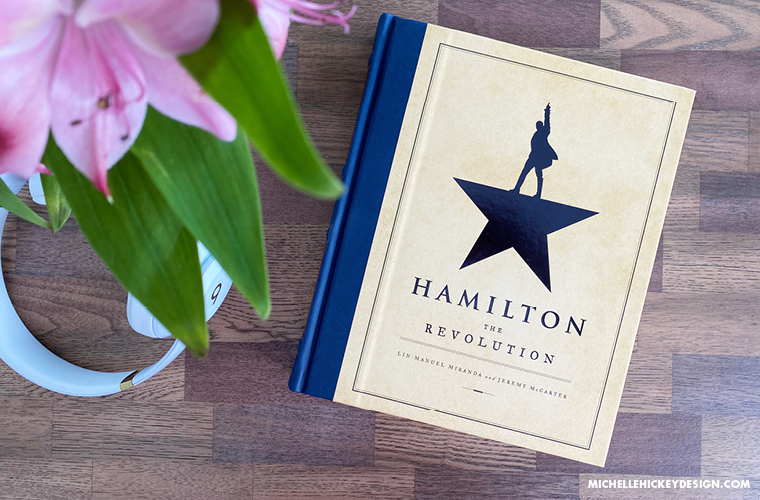
Hamilton: The Revolution continues
This book holds a richness that deserves more than one read, and for me, three months with Hamilton: The Revolution wasn’t enough. On the day I returned it, I ordered myself a copy to keep. As long as I keep creating, I want this book within arm’s reach. If you haven’t had the chance to indulge in this story, I hope you’ll check it out and discover your own creative ah-hah moments along the way.
This post contains affiliate links.

